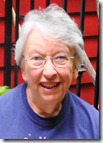There was a strong feeling that jazz has made the big leagues, as the New Jersey Symphony Orchestra performed Gershwin, Ellington and more in its first concert of the season at Morristown’s Mayo Center for the Arts Saturday afternoon. A program of jazz-inspired “classical” music was presented under the baton of the orchestra’s Quebec-born music director, Jacques Lacombe, and featuring as a soloist the internationally-acclaimed French pianist, Jean-Yves Thibaudet, playing two works by George Gershwin.
This is the first of four concerts the NJPAC-based orchestra has scheduled this year in the Morristown venue. The next one coming up is in January, followed by visits in April and June. The house on Saturday was pretty much packed.
Some of the music was pretty familiar, though the opening piece, “Remembering Gatsby: Foxtrot for Orchestra” by John Harbison, was new to me. A New Jersey native who currently teaches at the Massachusetts Institute of Technology, Harbison is a jazz pianist and a lot more in terms of his musical inclinations. As a lover of literature, though, he certainly found a jazz inspiration for his tribute to the F. Scott Fitzgerald character. The 7-minute piece calls to mind Astaire and Rogers dancing on air.
The original program was rearranged to put the Gershwin-Thibaudet pairing in the second half, and the Harbison piece was followed by the well-known, one might say iconic piece, the “Grand Canyon Suite,” written while the composer, Ferde Grofé, lived in Teaneck.
In five parts, the suite paints vivid musical pictures of the Arizona landmark, beginning with sunrise and not quite ending with sunset (a cloudburst follows). Between are a depiction of the Painted Desert and the popular “On the Trail,” featuring the clip-clop of the burro’s hooves. A program note mentions that Grofé originally asked the percussionist in Paul Whiteman’s orchestra to create the sound with coconut shells muted by leather. “On the Trail” is one of the most familiar pieces of American music, having been used in several movies and numerous commercials. We hope the composer collected all the appropriate royalties.
The intermission was followed by the placing of the grand piano center stage, and the introduction of Thibaudet. The pianist is well-known as an interpreter of Gershwin, reporting that he first played the composer’s work in France when he was 14. He has played “Rhapsody in Blue” with several orchestras and conductors, and in 2010 released a well-received recording with Marin Alsop and the Baltimore Symphony orchestra.
Thibaudet is a lover of jazz and of Gershwin. He has been quoted as saying, “You can’t play Gershwin if you don’t know jazz.” Obviously this Frenchman knows jazz. He opened with a performance of a short piece, Variations on “I Got Rhythm.” Composed ten years after “Rhapsody in Blue” created a sensation, the variations are fun to listen to and provide a great lesson on how a composer can play with a tune. Because the tune is so familiar, the variations are very easy to follow. It did make me wonder, though, what Mozart would have done with that melody.
The soloist is quite a showman and his legendary technique is wedded to a great sensitivity to the subtleties of the music. The feelings and images Gershwin evokes are warm, emotional and visual. The opening notes of the wailing clarinet, for example, has to be the sound the rising sun would make if the sun made a sound. This music is full of human emotion. Thibaudet, Lacombe and the orchestra brought this out.
The program ended with a performance of Duke Ellington’s “Harlem.” Interestingly, it was composed not for Ellington’s own band but for Arturo Toscanini and the NBC Symphony. Running 18 minutes, it includes 20 distinct musical pictures of the neighborhood the composer was memorializing. A very interesting piece we would like to listen to again. And by the way, the program points out that Ellington also had a New Jersey connection. He lived for many years in Edgewater and recorded at studios in Englewood.
